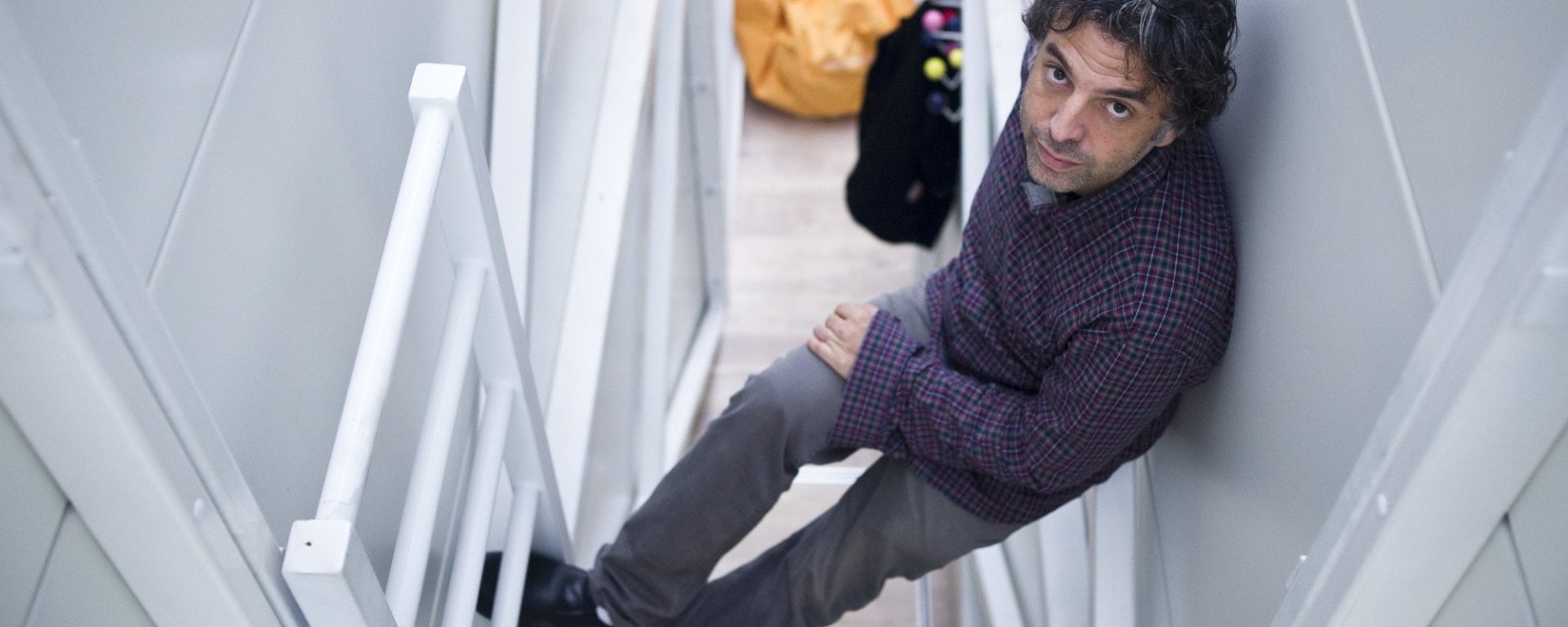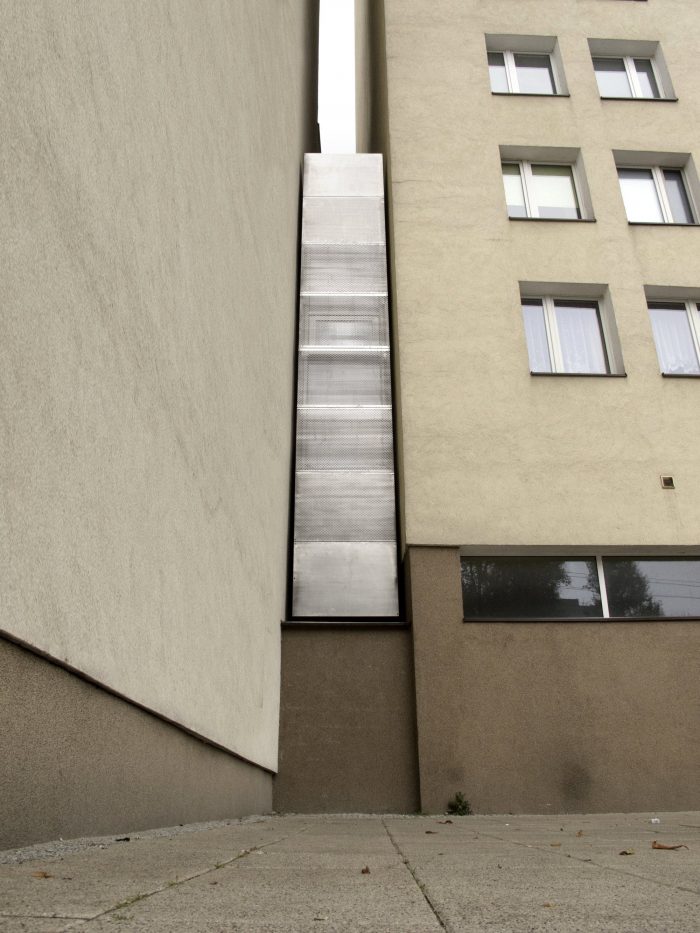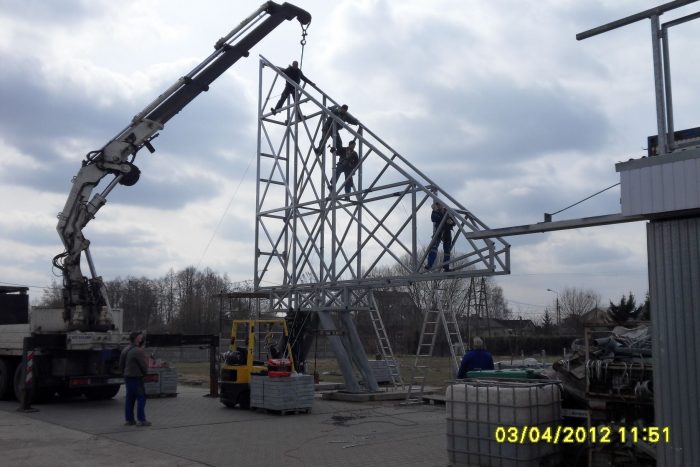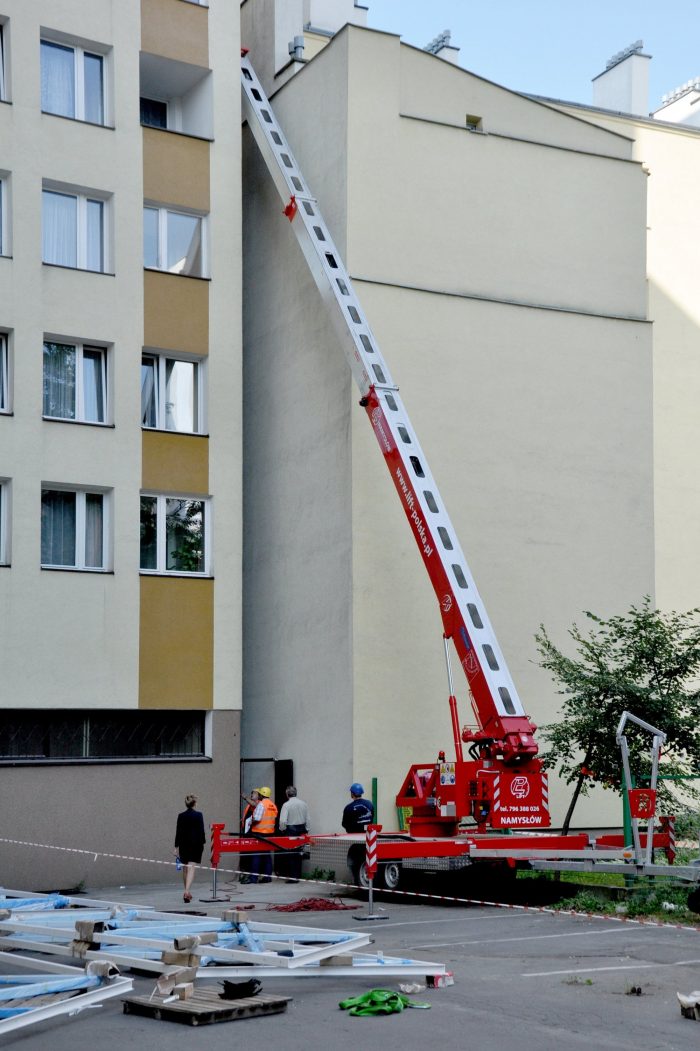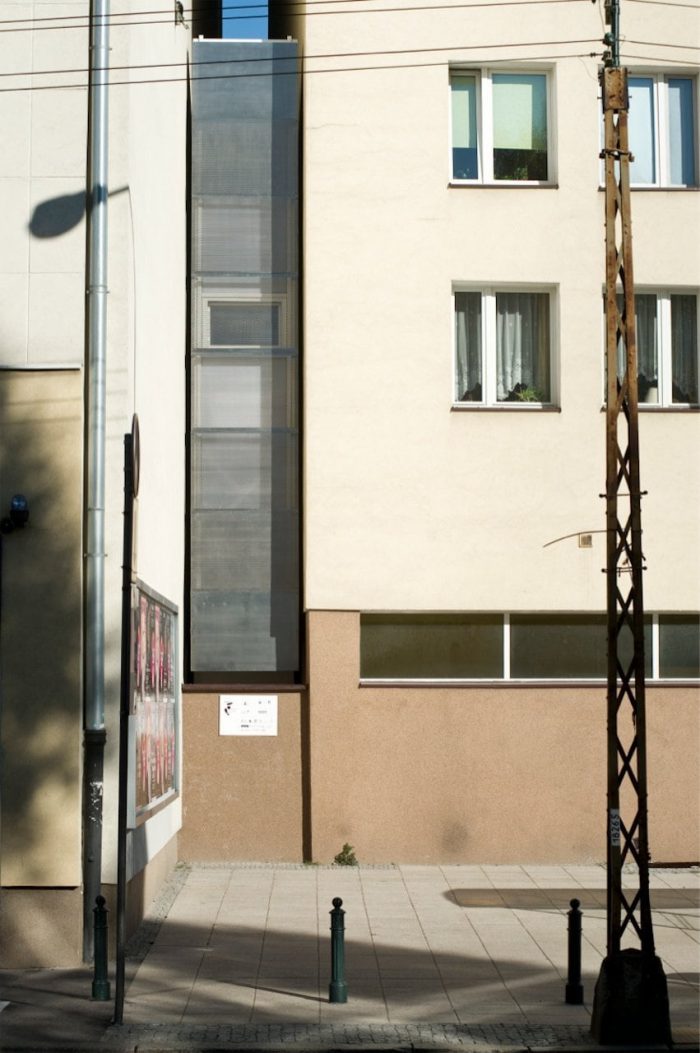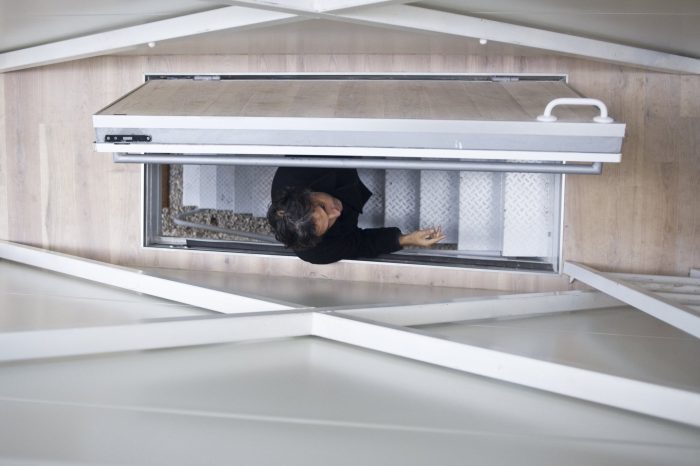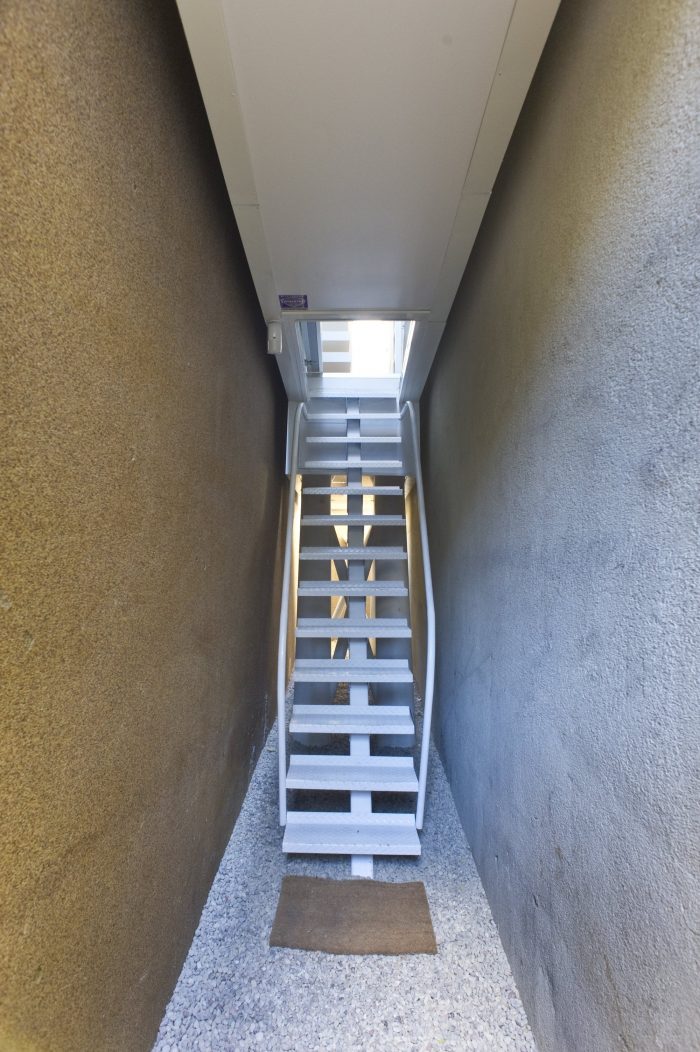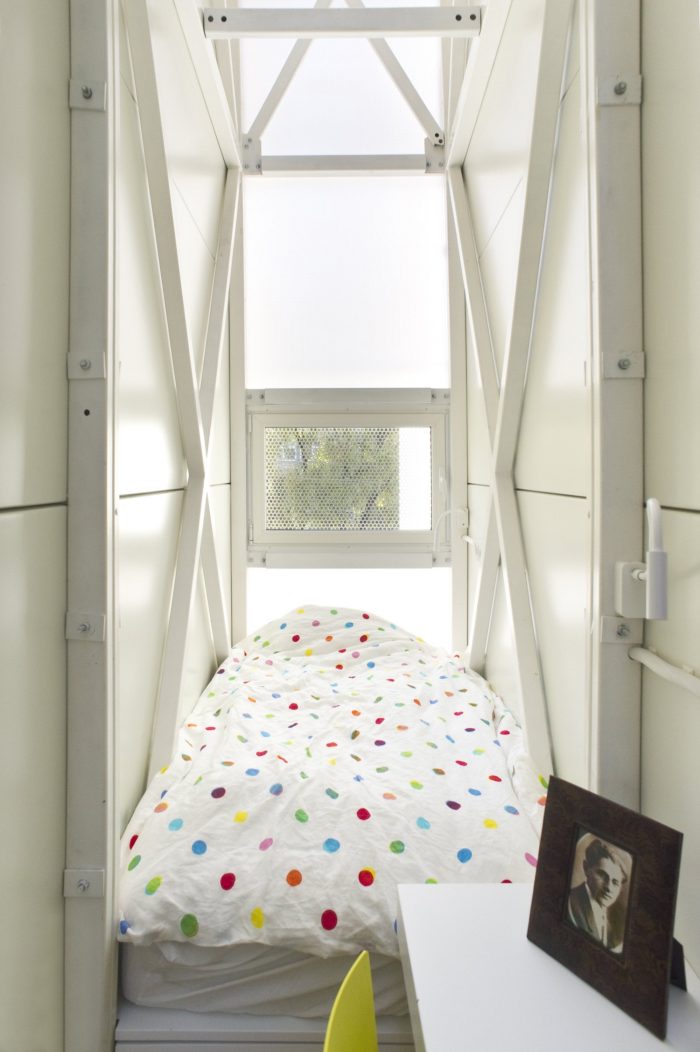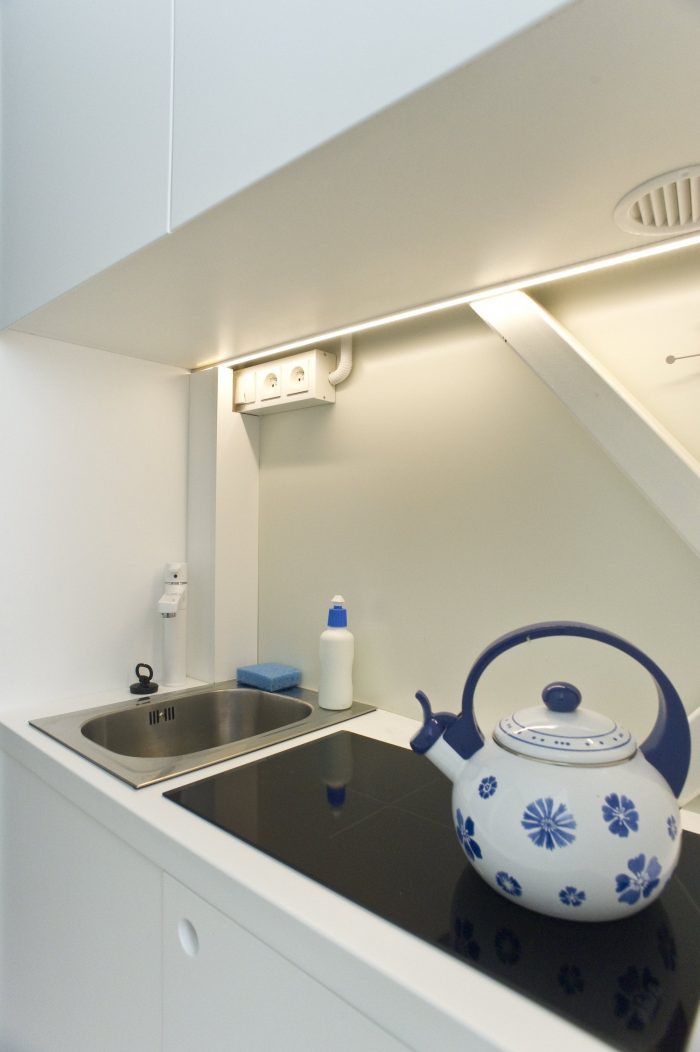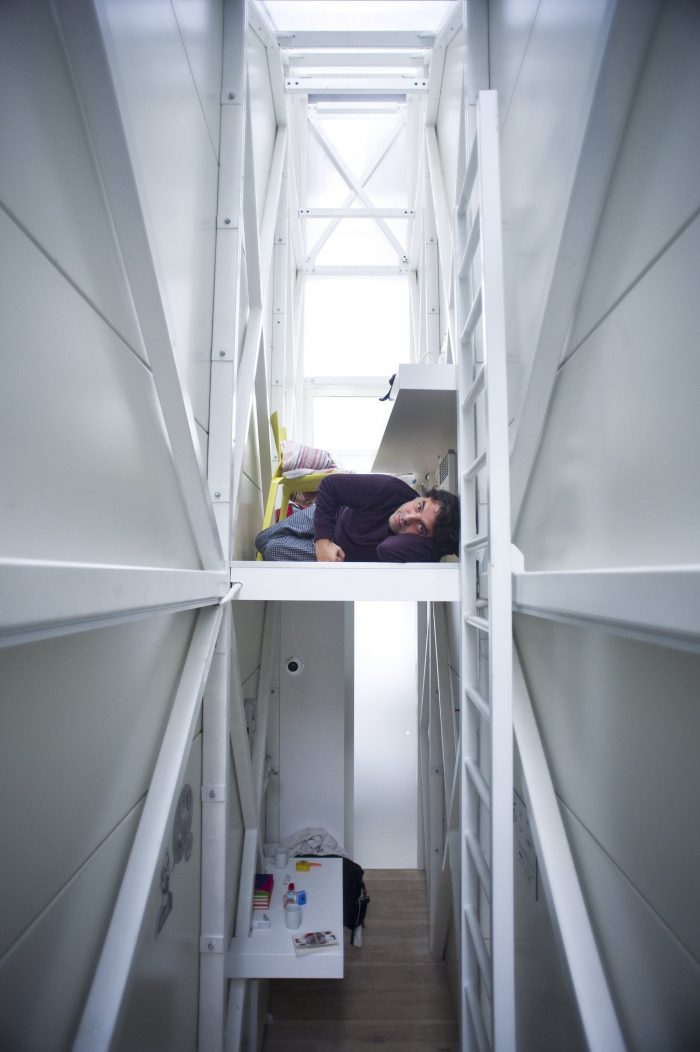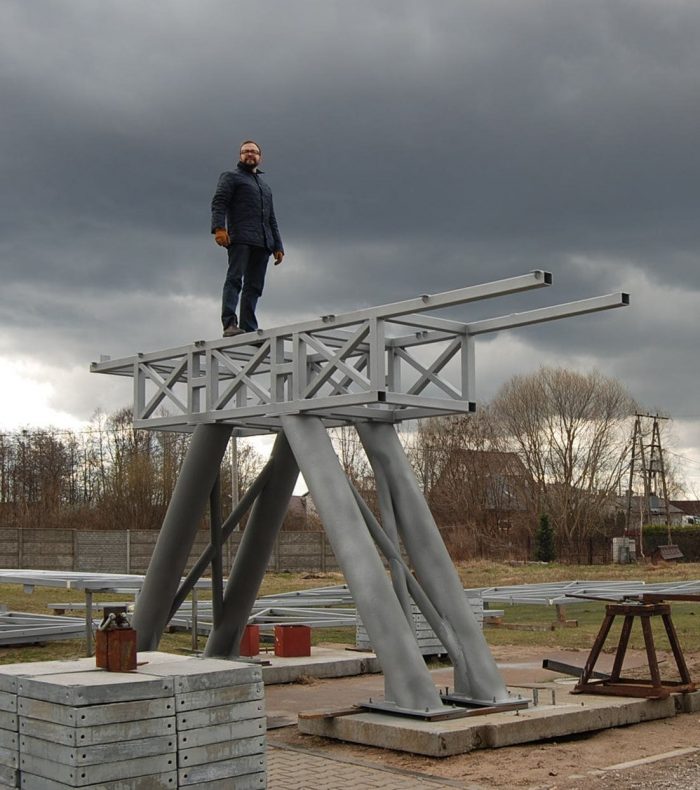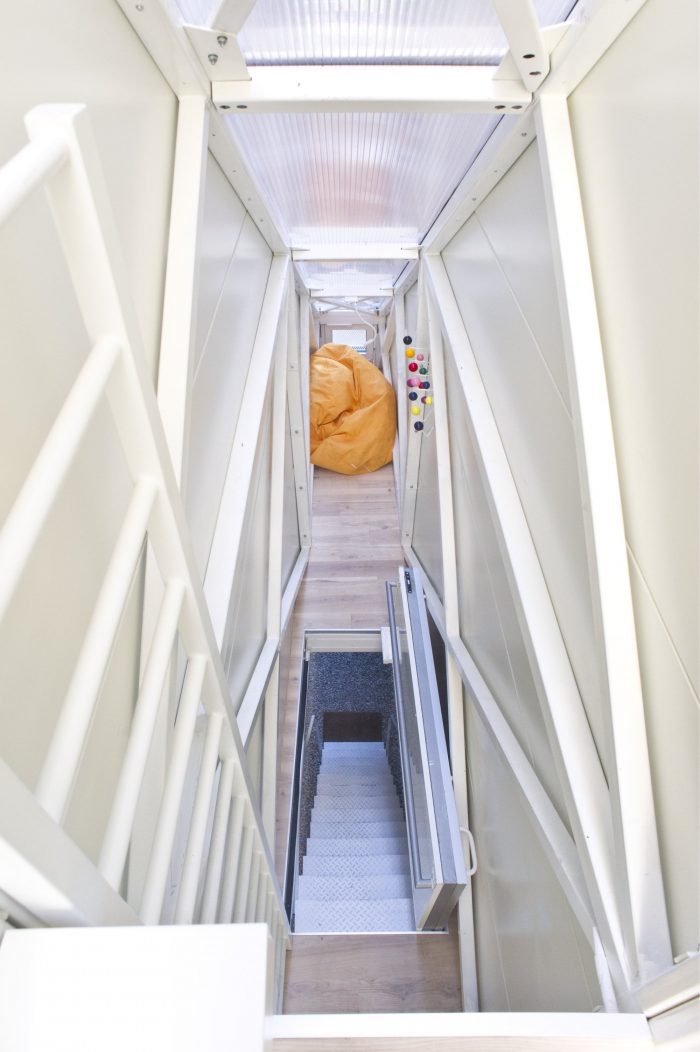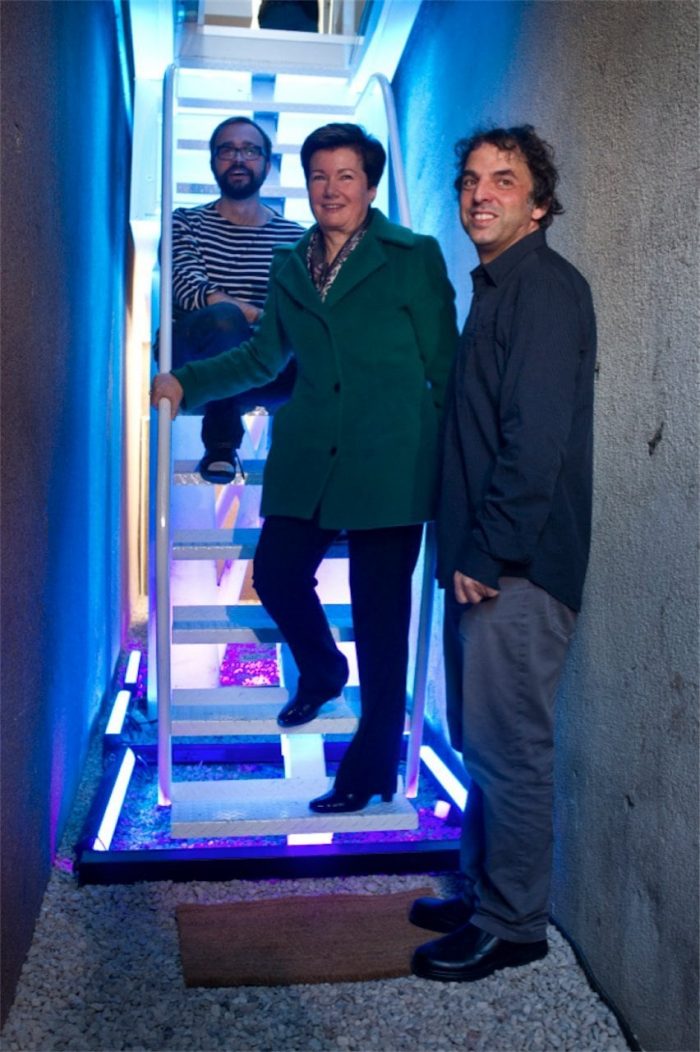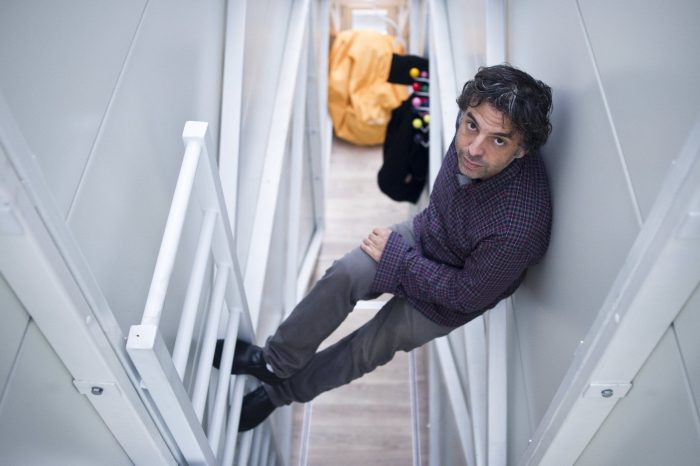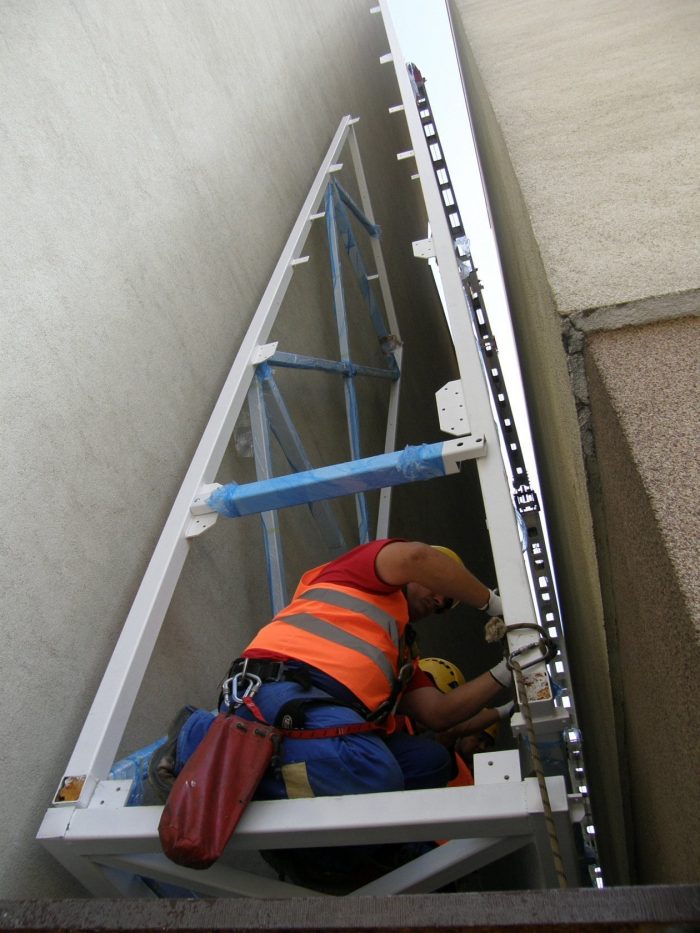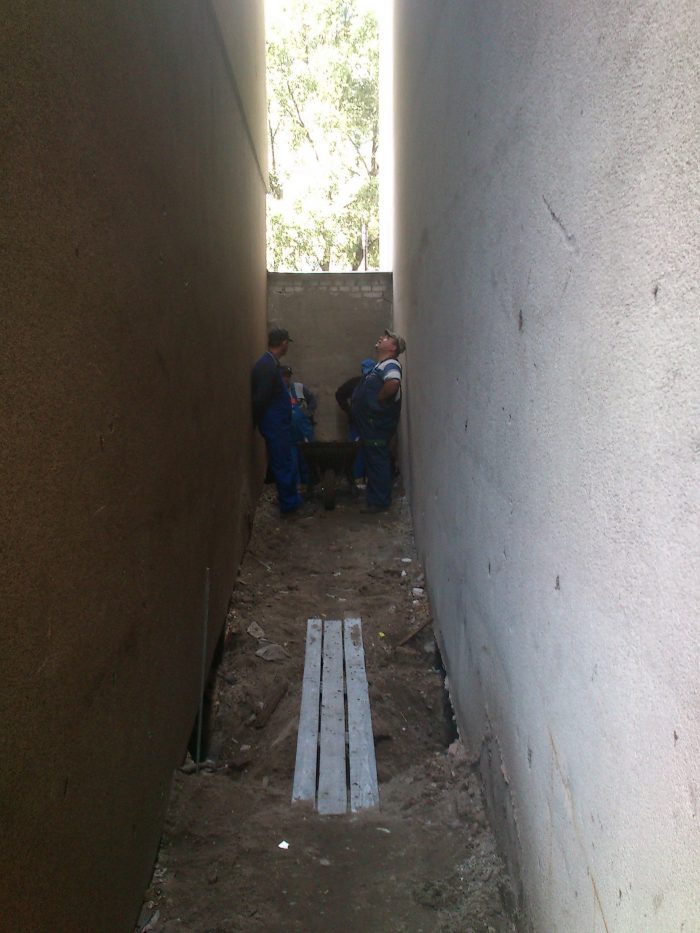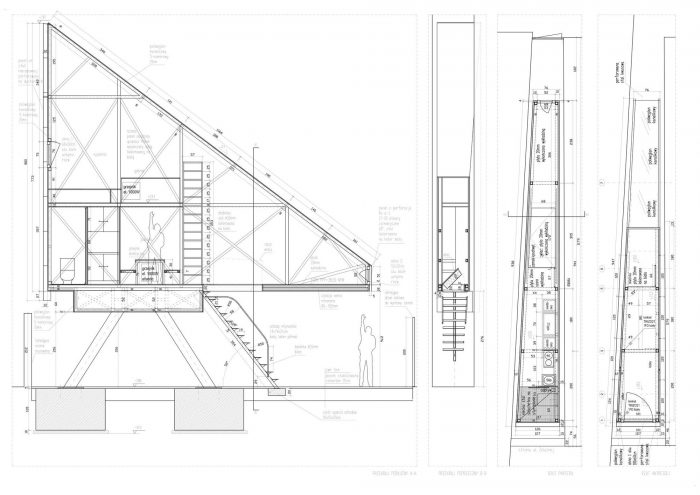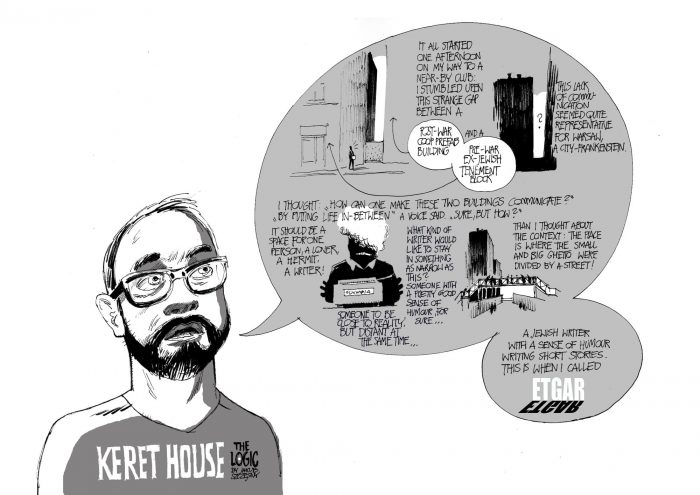Keret House是在两座现有建筑之间以插入的形式进行的装置艺术。该项目于10月20日星期六在华沙启动。它是由以色列作家Etgar Keret领导的。
这个狭窄的填充物建在两个历史时代的现有建筑之间,更像是一个艺术装置,反应了华沙的过去和现在。虽然这个半透明、无窗的结构最宽处只有122厘米,但它的自然采光的内部似乎并不像人们想象的那样幽闭恐怖。
Keret之家将无限期地作为旅行作家的临时住所,首先是以色列作家Etgar Keret。
Keret House is the installation art in the form of an insert in between two existing buildings. The project was launched on Saturday 20th of October in Warsaw. It is led by the Israeli writer Etgar Keret.
Built between two existing structures from two historical epochs, the narrow infill is more of an art installation that reacts to the past and present of Warsaw. Although the semi-transparent, windowless structure’s widest point measures only 122 centimeters, it’s naturally lit interior doesn’t seem nearly as claustrophobic as one would think.
The Keret House will serve indefinitely as a temporary home for traveling writers, starting with Israeli writer Etgar Keret.

公共空间的艺术隐居地
Keret House是一个功能齐全的空间,人们可以在其中生活,也可以创作。它位于Chlodna 22街和Zelazna 74街的建筑之间。”我们深信,它将成为现代华沙的一个象征,在其复杂的历史中扎根。这座房子吸引了全世界媒体的关注。他希望它能展示华沙最迷人的一面”,波兰现代艺术基金会的项目策展人Sarmen Beglarian和Sylwia Szymaniak说。
这座房子位于最窄处为92厘米,最宽处为152厘米的地块上。”这就是为什么起初看起来在这样的前提下建造生活空间是不可能的。Keret House是与这种错误的形象相矛盾的,同时扩大了不可能建筑的概念”,建筑师Jakub Szczesny说。这座房子本身最窄处为72厘米,最宽处为122厘米。
Artistic hermitage in public space
Keret House is fully functional space in which one can live as well as create. It is located between buildings at Chlodna 22 Street and Zelazna 74 Street. “We deeply believe it will become a symbol of modern Warsaw ingrained in its complicated history. The House attracts attention of media from entire world. He hopes it will show the most fascinating side of Warsaw”, said project curators Sarmen Beglarian and Sylwia Szymaniak form Polish Modern Art Foundation.
The House is located on the plot measuring 92 centimeters in its narrowest point and 152 centimeters in its widest point. “That is why at first it seems that the construction of living space within such premise is impossible. Keret House is to contradict that false image, simultaneously broadening the concept of impossible architecture”, says the architect Jakub Szczesny. The house itself is 72 centimeters in the narrowest and 122 centimeters in the widest point.
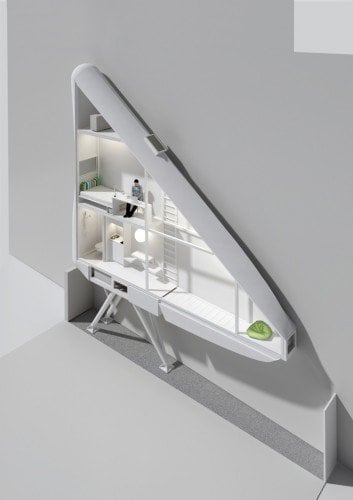
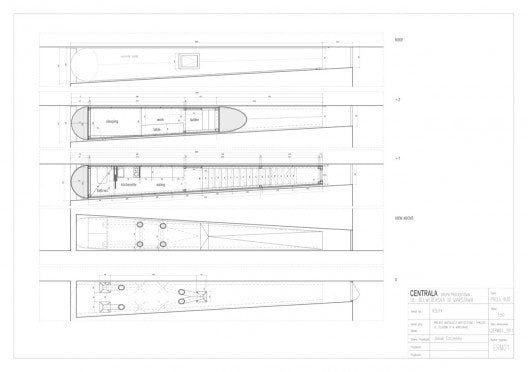
在历史的断裂处
这座房子位于两个历史时代的两座建筑之间。”第一座是位于Zelazna街的砖砌建筑–二战前的城市碎片,几乎不复存在。第二栋是合作的混凝土公寓楼,是 “强加的结构 “的一个元素,其目的是否定以前的城市景观。它们的相邻是巧合的–就像华沙的许多建筑结构一样。Keret House是这个城市的城市结构中所谓的 “不匹配 “的一个完美例子。另一个原因是城市的战争历史–房子所在的地方,有两个犹太区–大犹太区和小犹太区相遇。离房子只有几步之遥,有一座桥连接着两个封闭的空间,”Jakub Szczesny解释说。
In the fracture of history
The house is located between two buildings from two historical epochs. “The first is a brick building on Zelazna Street – a fragment of the pre-world war II city, almost no longer existing. The second – a cooperative concrete apartment building, an element of an “imposed structure”, which was aimed at negating the previous city landscape. Their adjacency is coincidental – like many architectural structures in Warsaw. Keret House is a perfect example of the so-called “non-matching” in the city’s urban fabric. Another reason is the city’s war history – where the house is located, two ghettos – the large ghetto and the small ghetto met. Only a few steps from the house, a bridge connecting the two closed spaces, stood”, explains Jakub Szczesny.
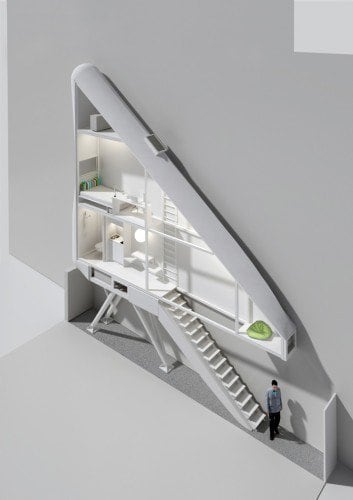
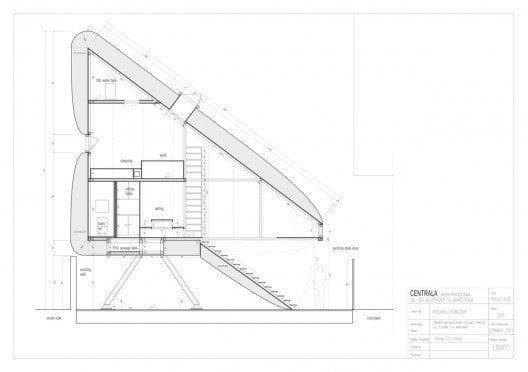
Architects: Jakub Szczesny
Year : 2012
Photographs : Polish Modern Art Foundation / Bartek Warzecha
Country : Poland

